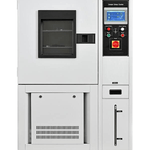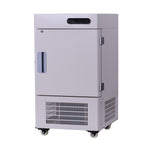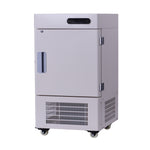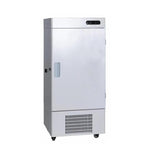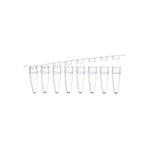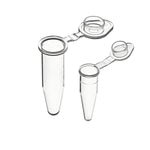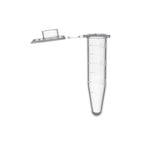You have no items in your shopping cart.
A centrifuge is a piece of laboratory equipment used to separate fluids, liquids, or gas contents based on density. The device is mostly found in laboratories ranging from clinical, academic to research institutes.
A centrifuge is used to purify cells, viruses, subcellular organelles, proteins, or nucleic acids. There exist various types of centrifuge devices, which are classified through intended use or rotor design. The various types of centrifuge include:
Floor-standing
Microcentrifuge
STAT
Large capacity
Refrigerated
Ultracentrifuge
A centrifuge is a valuable piece of laboratory equipment. Understanding how it works is crucial to getting the best out of the tool.
How does a centrifuge work?
The purpose of this device is to accelerate and replicate centrifuging to separate components of the given sample. Centrifuging is the process by which natural forces are concentrated to act on all particles with different densities. Through this process, the separation of components is accelerated.
Centrifugation can happen with either sedimentation or filtration methods. Filtration is preparative, the purpose being to isolate specific particles, while sedimentation is analytical, which measures the physical properties of the sedimenting components. In both methods, particles are suspended in liquid then separated in the centrifuge.
This process is possible due to the application of centrifugal force. When the rotor rotates about a central axis, it generates the centrifugal force that acts upon the components in suspension.
How does a centrifuge separate blood?
A centrifuge spins the blood sample placed in the device to separate platelets, plasma, and red blood cells. As blood is spanned, plasma rises, and between the two particles is a layer of platelets that can be tracked into a small space attached to the centrifuge cylinder.
But the details are not as simple as described above; there is a lot more at play. A large percentage of blood is a fluid known as plasma followed by red cells that contain oxygen. One crucial measure of blood is the amount of blood volume occupied by RBC, known as (the hematocrit). For us to determine this, the blood is spun in a centrifuge. The process mimics the effect of gravity in terms of density, effectively increasing the value of g. Red cells gather at the bottom when spinning the blood in the centrifuge since they are denser than plasma.
Separating Platelets from a Whole Blood Donation
For a technician to separate platelets of a whole blood donation, the blood needs to be stored at room temperature, separated, stored, and all this should be done within eight hours of donation. To have sufficient platelets for a transfusion, about six bags of blood of different donors need to be pooled together to fit a single unit of platelets.
Platelets should be used five days after donation. Platelets assist in stopping the bleeding of patients who undergo surgery. It's also useful to cancer patients in preventing hemorrhaging, which is a side effect of radiation and chemotherapy.
After you donate blood, your spleen is triggered to flood your system with stored platelets to prevent bleeding.
It's because of this reason that more platelets and plasma can be collected. This means a person can donate two or more potential doses of platelets in a single visit. Meanwhile, the donor's healthy bone marrow starts converting stem cells into new platelets to replace the ones lost.
How to use a centrifuge
Although most centrifuge functions are automated, you should take some measures and precautions to use the device effectively. The steps provided below will show you how a person can properly use and handle the device.
Place it on a sturdy and level work surface.
Before you start the process of centrifugation, ensure you place it on a flat, level, and sturdy surface. If the precaution is not followed, it might tamper with the results or not be effective at all.
Balance the centrifuge
Attaining balance is crucial not only for a successful outcome but to avoid significant damage to the laboratory devices or injury to the operator. The mass of all tubes needs to be equal, and if not, it should be as close as possible.
This becomes crucial, especially at high rotor speeds. It's advisable to balance the masses of each tube to 0.1 gram, and it should be balanced by mass, not volume. For example, avoid balancing the samples consisting of fluid with more or lower density than water with equal volume.
Please don't open the lid while it's working.
Although most centrifuges have a safety shutoff feature, it only cuts the power supply to the rotor. The motor and tubes will still spin for some time since it already has its force of inertia unless the motion is stopped or slowed down by frictional force.
What to do if the device is shaking or wobbling?
A small amount of vibration is normal, but if there is a large amount of vibration, then there is cause for concern. Before jumping to conclusions, see if the tubes have been correctly balanced. If that doesn't resolve the problem, it's about time you take the centrifuge to be serviced by the dealer or manufacturer.
How to balance a centrifuge appropriately
Before starting a centrifuge, it is essential to load it appropriately. Maintaining the balance of the centrifuge prevents significant damage to the device, and it's essential for safe operation.
Step-by-step process on how to safely balance a centrifuge
1. Ensure you fill all sample tubes evenly. If you need additional tubes to ensure balance, add water or liquid similar to the components in the tubes. Ensure you attain the nearest 0.1 grams.
2. For every tube, you put in the rotor, insert a tube with an equal weight directly on the other side of the sample. This will establish balance at the center of the rotor.
3. Rotate the rotor at a 90° angle and insert two extra tubes directly opposite the other tubes.
4. Repeat this process until the total balance is attained.
The final thing you need to ensure to maintain your centrifuge properly is regular cleaning with an alcohol-based disinfectant or a neutral-based disinfectant.



